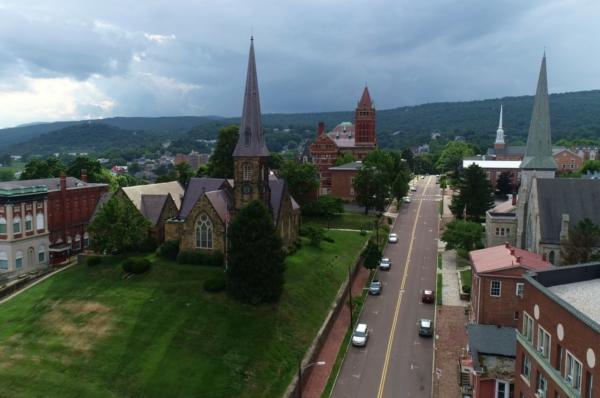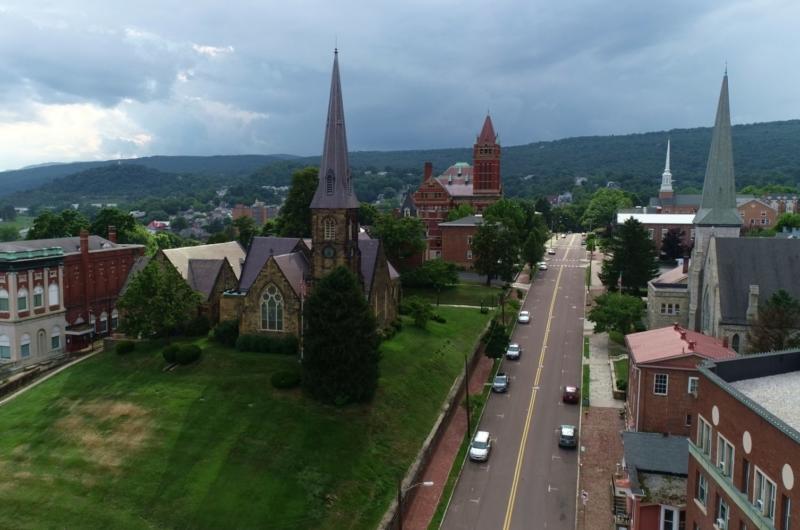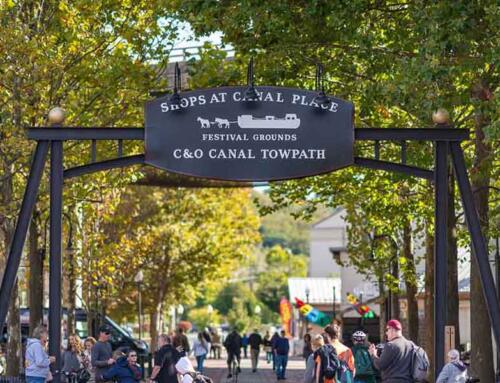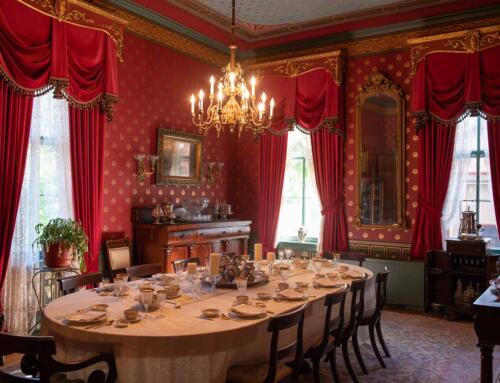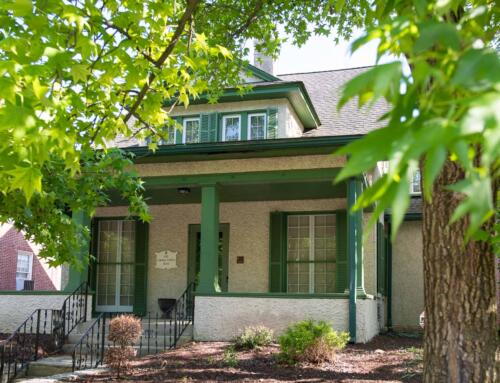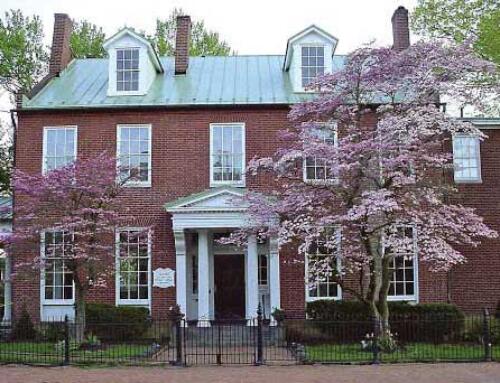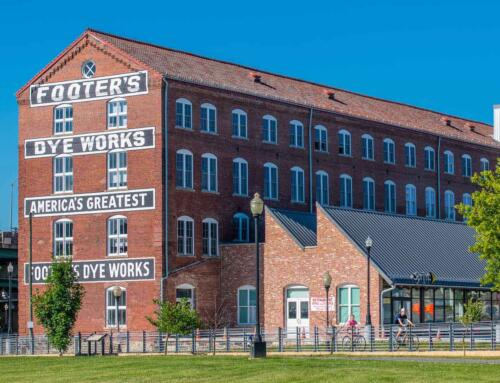The Washington Street Historic District
High-Styled Residential Neighborhood.
The Washington Street Historic District is a primarily residential neighborhood west of downtown Cumberland, once home to the city’s entrepreneurial and managerial class, as well as social and political leaders. One of the city’s most visually impressive neighborhoods, Washington Street is comprised of numerous high-style examples of mid-19th and early 20th century architectural styles, ranging from Greek Revial to Victorian, Colonial Revival to bungalows. Various prominent Cumberland citizens have resided on the tree-shaded street, including the president of the C&O Canal, state congressmen, and former state governors.
Three major architects made their imprint on the district. John Notman, founder of the American Institute of Architects and a facilitator of the American Gothic Revival, designed the Emmanuel Episcopal Church. Cumberland native, Bruce Price, designed Emmanuel’s Gothic parish hall, before developing a successful career in New York. Locally prominent architect, Wright Butler received his first commission for the Allegany County Courthouse, to which he applied aspects of the Richardson Romanesque style. Butler, along with other local architects George Sansbury and Robert Holt Hitchens, designed most of the 20th-century houses in the district.
Download Walking Tour Map
Today, the district remains a prestigious residential neighborhood, and is a most delightful six-block walk. A plethora of flowering trees, shrubs and gardens change with each season, and different architectural details become evident at various times of day and night.
Also located in the Washington Street Historic District are three very fine museums; the Gordon Roberts House, the F. Brooke Whiting House, and the C. William Gilchrist Museum and Gallery.
The Washington Street Historic District
High-Styled Residential Neighborhood.
The Washington Street Historic District is a primarily residential neighborhood west of downtown Cumberland, once home to the city’s entrepreneurial and managerial class, as well as social and political leaders. One of the city’s most visually impressive neighborhoods, Washington Street is comprised of numerous high-style examples of mid-19th and early 20th century architectural styles, ranging from Greek Revial to Victorian, Colonial Revival to bungalows. Various prominent Cumberland citizens have resided on the tree-shaded street, including the president of the C&O Canal, state congressmen, and former state governors.
Three major architects made their imprint on the district. John Notman, founder of the American Institute of Architects and a facilitator of the American Gothic Revival, designed the Emmanuel Episcopal Church. Cumberland native, Bruce Price, designed Emmanuel’s Gothic parish hall, before developing a successful career in New York. Locally prominent architect, Wright Butler received his first commission for the Allegany County Courthouse, to which he applied aspects of the Richardson Romanesque style. Butler, along with other local architects George Sansbury and Robert Holt Hitchens, designed most of the 20th-century houses in the district.
Download Walking Tour Map
Today, the district remains a prestigious residential neighborhood, and is a most delightful six-block walk. A plethora of flowering trees, shrubs and gardens change with each season, and different architectural details become evident at various times of day and night.
Also located in the Washington Street Historic District are three very fine museums; the Gordon Roberts House, the F. Brooke Whiting House, and the C. William Gilchrist Museum and Gallery.


